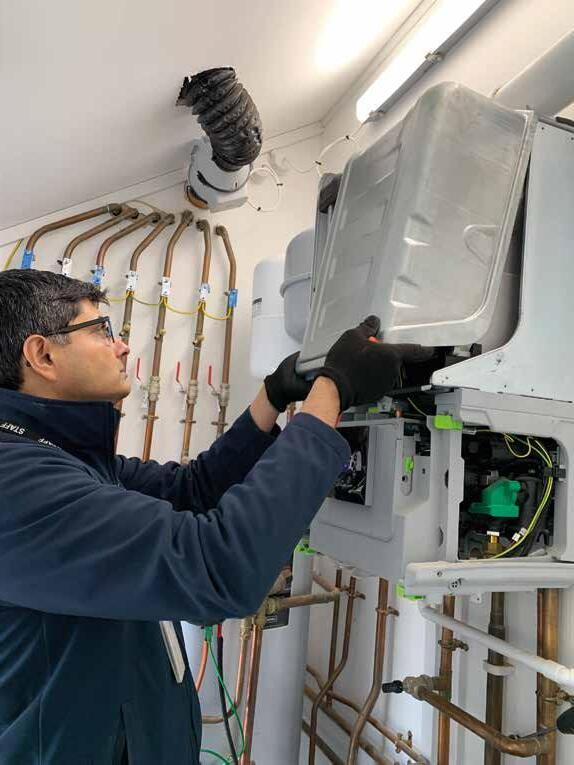Old



Old



25 Technical FAQs from Gas Safe Register’s Technical Helpline




34 Products
The latest launches from Baxi, Hamworthy, Honeywell, Navien, Panasonic, Remeha, Vaillant and Viessmann
33 Training
The Heat Training Grant is now available for gas engineers in England to receive a discount of up to £500 on the cost of heat pump training
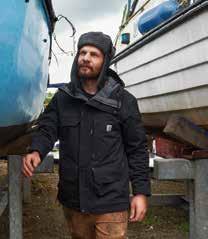

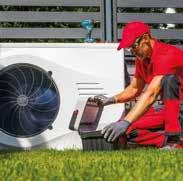
The first full-year figures for take-up of the Boiler Upgrade Scheme (BUS) turned out to be disappointing. The government had hoped that 30,000 households would snap up the £5,000-£6,000 grant to replace their fossil fuel boilers with a heat pump: but less than half that number did so.
There’s no single reason for the slow-take up but you can probably take your pick from the cost-ofliving crisis, lack of awareness and demand, and not enough heat-pump qualified heating engineers – who also need to be MCS-certified to enable households to access the grant. The much vaunted target of 600,000 heat pump installations by 2028 increasingly looks like a hard number to hit, despite the recent extension of the BUS.
So what will make heat pumps more attractive than trusty gas boilers? Lower prices? Less disruption? Or maybe hybrids could have a serious role to play in helping households move to lower-carbon heating. The combination of a small heat pump with a gas boiler is seen as a good stepping stone for households who want to take their first step into renewables. And they’re already eligible for grant support in Scotland: following suit in England and Wales could make a difference.
Nicki Shearer, editorGas Safe Register, PO Box 631, DARLINGTON, DL1 9GD

Email: enquiries@gassaferegister.co.uk, register@gassaferegister.co.uk or technical@gassaferegister.co.uk
Managing editor: Sue Harker sue.harker@gassaferegister.co.uk
Editor: Nicki Shearer editorial@registeredgasengineer.co.uk
News: Jennie Ward news@registeredgasengineer.co.uk
Publisher: Peter McCreary publisher@registeredgasengineer.co.uk
Technical consultants: Carl Banister, Stephen Gallagher, Jonathan Palmer, Rob Walkerdine
Production: Mark Turpin
Advertising enquiries only: Ian Carter ian@rgemagazine.co.uk
Additional print subscriptions £25 per year
email: wgardiner@circdata.com, Tel 01635 869 868
The views expressed in this magazine are not necessarily those of Gas Safe Register. The publishers will accept an advertisement or other inserted material only on the condition that the advertiser warrants that such advertisement does not in any way infringe copyright or contravene the provisions of the Trade Descriptions Act. All copy is subject to the approval of the publisher, who reserves the right to refuse, amend, withdraw or otherwise deal with advertisements submitted to it at its absolute discretion and without explanation. All advertisements must comply with the British Code of Advertising Practice. ABC membership approved 19 March, 2009.
Registered Gas Engineer is written, designed and published by The Team on behalf of Gas Safe Register. 30 Park Street, London, SE1 9EQ
Registered Gas Engineer magazine is funded by your registration fee as well as paid-for advertising and we must ensure that it’s the best possible value to you. Later this year, we will be making some changes to how we deliver and how you can read this magazine.
Back in January, we had a huge response to our reader survey, in which we asked how you like to read the magazine. You also shared which elements of it you enjoy, what you find valuable in your work, as well as what you find less useful. We have evaluated what you told us and how we can continue to give you the information you need, in the format you’ve told us you want.
authority and authenticity; many of you keep copies long after they’ve been published to refer back to, and some use our articles and features to support recommendations you’ve made to your customers.
97 % of gas engineers manage their registration online
But we all know that in a fast-moving news environment, it’s hard to stay on top of the latest updates in a monthly magazine. We are therefore going to make the changes you’ve told us you want and need and add to the ways you can read Registered Gas Engineer.
information that you typically read in print will now shift online to our website www.registeredgasengineer. co.uk
This means you will be able to get up to date faster and more easily online. We’ll be adding more stories and information to our website and you can check in whenever suits you to find out what’s going on.
Sending an email uses about
1.7 per cent of the energy that it takes to deliver a paper letter.*
*www.8billiontrees.com
The past few years have seen a huge shift in the way we all consume news and information. We know that many people choose and prefer to stay up to date online. But we know from our reader survey that you also enjoy this magazine in print, and that many like to take time to read important, and especially technical, and in-depth information.
You’ve told us that you value this magazine’s accuracy,
With more than four in five respondents to our reader survey telling us you want to receive a regular newsletter via email, you’ll now receive a new monthly email from us, which will include the latest information from Gas Safe Register and any technical updates you need to know.
Additionally, much of the news and time-sensitive
Technical first You’ll continue to receive Registered Gas Engineer in print, but the frequency will change to every two months, starting this November. Technical features will remain at the heart of the magazine and those features will be easier to find. Plus there will be more of them. We’ll bring you more of the updates you need from Gas Safe Register: its campaigns, people and policies – and how these affect you.
We’ll continue to cover the topics you want to know more
Currently, Registered Gas Engineer is posted to every single Gas Safe registered business: that’s 80,000 copies every month – or nearly 1 million (960,000) a year.
We know that some of you don’t want to receive so much paper because you can see and download digital editions on our website and via your Gas Safe Register online account.
We changed to a recyclable paper wrapper some time ago, and the changes we’re going to make to our print edition later this year will halve our environmental impact – and help you to reduce yours too.
70 tonnes of paper saved + 4.8 million tonnes of CO2
Carbon impact of reducing the number of posted copies of Registered Gas Engineer*
* Based on calculations provided by www.8billiontrees.com
about: gas boilers and ancillary topics, new heating technologies, controls, training and so on. And we’ll be able to go into more depth through the magazine’s evolution.
Of course, we will still include your favourite part of the magazine: the Good, the Bad and the Ugly. In fact, we’ll be able to include more of your photos in each issue for your enjoyment.
The design of your magazine is evolving too: we know that a significant number of readers live with dyslexia, and we will be making changes to take this into account and to ensure that it’s as accessible as possible, to as wide an audience as possible, particularly when it comes to technical updates. We’ll continue to make sure that our online information complies with accessibility standards.
Over the next few months, we will tell you more about what to expect as we move towards more environmentally sustainable distribution. But, in the meantime, please do talk to us if you have any questions.
You can email us at: editorial@ registeredgasengineer.co.uk
You don’t need to do anything: these changes will happen automatically. You’ll continue to receive the print magazine to your nominated address, as you have always done. And you will receive the monthly newsletter automatically, as long as you have given your email address to Gas Safe Register as part of your registration details, and that it’s up to date.
“You’ve told us that you value this magazine’s accuracy, authority and authenticity and that many of you keep copies to refer back to.”


Powered by ON technology, our reliable, space-saving Navien Combi Boiler (NCB) range puts hot water first. And, at Navien, we put you first. From expert training and technical support, to earning points towards exclusive rewards with the Navien Choice loyalty programme, to warranties of up to 12 years – when you’re looking for more as a Navien installer, we’re ON it.
navien.co.uk/professional

It’s just one month until Gas Safety Week. This year’s overall theme is diversity and it will highlight the variety of registered engineers from all walks of life and backgrounds, showcasing their personal and professional experiences. It will recognise your fantastic efforts in helping to keep the nation gas safe.
Gas Safe Register will be launching a new element to Gas Safety Week this year, thanks to the involvement of gas engineers themselves.

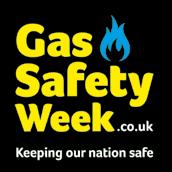
The details are being kept under wraps for now, so you’ll have to wait until next month for the big reveal.
As in previous years, messages will be tailored to focus on a different topic every day. These themes are reflected in the free supporters’ toolkit, which is packed full of materials that you can use to join in easily with the daily themes. The toolkit includes logos and images, easy-to-use pre-written social media updates, web banners, articles and factsheets and a press release template.
You can download the toolkit
When you notify installations, you can now choose to have the Building Regulations Compliance certificate emailed to the homeowner or responsible person.
After you’ve logged into your Gas Safe Register online account, you’ll see the online notification system in the quick links section on My Dashboard. To choose to have the certificate emailed, you must also provide the first line of the address, town, postcode, contact details and delivery reason.
No hard copy will be posted when you choose the email option. Emails will be sent within four days, excluding bank holidays.
You can also choose to add an email address when you submit a notification by phone.
You must report the installation of heat-producing gas appliances, and heating and hot water systems connected to the gas appliance, in England and Wales. There is no mandatory requirement to notify gas work in Northern Ireland or Scotland.
directly from the Gas Safety Week website at: GasSafetyWeek.co.uk
You’ll also be able to order free hard copy leaflets and posters by emailing marketing@gassaferegister. co.uk

Gas Safe Register will be hosting a reception at the Houses of Parliament in the week before Gas Safety Week, with the aim of raising awareness of gas safety and the importance of having gas appliances safety checked every year by a qualified Gas Safe registered engineer. You’ll be able to hear from Gas Safe Register, APPCOG and other industry speakers via Facebook Live (technology allowing).
Please email marketing@ gassaferegister.co.uk if you have any enquiries about Gas Safety Week. And don’t forget to follow @GasSafetyWeek on Twitter for all the latest updates.
Gas engineers often need to balance their customers’ requirements when fitting an appliance against those of the manufacturer’s installation instructions. These can be compounded by factors such as the constraints of the property and intended appliance location.
It’s important to remember that the primary requirement is to ensure that the appliance is safe and complies with the Gas Safety (Installation and Use) Regulations. Gas engineers need to ensure that the specific installation requirements of the manufacturer are met, and they should undertake a survey of the intended location of the appliance and its instructions before starting work, to ensure that the installation will comply with the relevant regulations.
What if I cannot meet all the requirements as specified?
Gas Safe Register
recognises that there are sometimes unique circumstances where the only available location for an appliance is one that will not comply fully with the manufacturer’s installation instructions.
Concession to Manufacturer’s Instructions template and follow the process in the diagram. You can download the template by signing into your online account.
Important: This process must be used at the quotation stage, before work takes place.
Manufacturer’s view and advice
The manufacturer’s installation instructions will cater adequately for most installations. This process is to cater only for those rare occasions where there is genuine ambiguity and/or extenuating circumstances:
• Any concession given by a manufacturer to its standard
Customer requests a new gas installation/appliance
Gas engineer carries out pre-installation survey. They identify unique circumstances with no alternative installation option or solution that will allow full compliance with MIs
Gas engineer sources and completes Request for Concession template document from Gas Safe’s website and sends to the manufacturer’s technical team for approval
As a Gas Safe engineer, you must seek the advice and approval of the appliance manufacturer to ensure that any intended deviation from its instructions will not reduce safety before undertaking any gas work.
A formal process is available to help you provide a consistent approach for dealing with these circumstances.
If your intended installation cannot fully meet the requirements of the manufacturer’s installation instructions, you must request a formal concession from the appliance or equipment manufacturer to deviate from the instructions.
To provide a consistent and robust method for this process, you can use the Request for
written instructions will relate only to the appliance, address and concession stated. It cannot be used to apply similar concessions to other work. A separate concession must be obtained for any additional site or appliance.
• Approval will not be granted without valid reason and supporting evidence. It is not acceptable to circumvent the manufacturer’s instructions simply to make the job easier.
• A request for concession to the manufacturer’s instructions does not
• All gas work should be carried out competently and safely, in accordance with the relevant geographical gas safety legislation, Building Regulations, manufacturer’s instructions and appropriate industry standards.
• Deviations from the manufacturer’s instructions, normative industry standards or technical specifications or the use of ‘alternative methods’ to achieve compliance are not acceptable without documented and auditable approval from the equipment manufacturer or other relevant authority.
• It your responsibility to provide this evidence in these circumstances. Approval for any deviation should be sought from the manufacturer or other relevant authority before any gas work is carried out.
detract from them; it is aimed at helping compliance with the regulations and making sure that unfounded defects are not raised and unsafe situations logged incorrectly.
Gas Safe Register will require you to show evidence of this approval process where an
Manufacturer assesses the Request for Concession
Manufacturer grants concession or asks the gas engineer for more information
Gas engineer provides more information, such as technical detail or photographs
Manufacturer grants concession
Gas engineer tells customer that concession is approved and installs and commissions appliance in accordance with the concession
Gas engineer provides their customer with a copy of the concession approval, along with all appliance instructions and completed Benchmark commissioning documents
Gas engineer sends copy of concession approval to Gas Safe Register to be added to their registration file
Gas engineer notifies the installation as compliant with Building Regulations
inspection identifies appliance or equipment installation defects. Where approval of a requested concession has not been granted by the manufacturer, you will be required to correct the defect to meet the existing installation instructions, in accordance with the issued defect notice. n
Manufacturer does not grant concession
New installation does not start and alternative compliant installation solution must be sought and used
For more information see Technical Bulletin 158: Requesting a Concession to Manufacturer’s Instructions, by logging in to your online account at: www.GasSafeRegister. co.uk/sign-in
You can find more information about Gas Safe Register’s policies at: www.GasSafeRegister.co. uk/about-us/our-policies

James Bowen of Integral Plumbing and Heating in Stafford has been awarded the coveted title of National Heating Installer 2023. James scooped the top spot after impressing judges with his professionalism, problem-solving and commitment to customer satisfaction. He had been a regional winner for the West Midlands twice before.
James says: “I was delighted to have received such positive feedback from the judges this year. I was extremely proud of the project I submitted, and know how dedicated I am to my work, so to get some recognition felt amazing.
“But to win the national award is absolutely incredible – I’m speechless. Winning the national title will help me to grow my
business, connect with manufacturers and do more work with others operating in the heating industry.”
Nick Irlam from Bolton-LeSands, owner of Irlam UK, was the national runner-up, having impressed with his technical expertise and customer-centric approach. Nick has also found regional success previously, having overcome tough competition in the North West.
This year’s Most Sustainable Installer Award went to Liam Barry of Custom Renewables in Banbury. The award recognises those who are doing everything they can to minimise the impact of their work on the environment. The judges commended Liam’s knowledge and expertise in
delivering energy-efficient solutions, with a focus on helping people minimise their utility bills as well as their carbon footprint.
Sophie Maquire is this year’s Rising Star, which recognises apprentices who are training and working hard to demonstrate real commitment and high standards. Sophie wowed the judges with her dedication to problem-solving and successful outcomes for customers.
Sophie says: “After being shortlisted for the award in 2022, I am delighted to be taking the trophy home with me this year. I have seen what winning the Heating Installer Awards has done for other people in the industry and I will be using the recognition to continue inspiring other young people and women to enter an industry that I love so much. A huge thank you to everyone who helped me get to this point.”
Look out for a new way to stay up to date with the latest essential gas safety information. Tech Talks will see Gas Safe’s Technical Team sharing hot topics, as well as some of the latest questions received on its engineer helpline.
Tech Talks will be available as a YouTube video and via Gas Safe Register’s social media channels. Gas Safe is also looking at other ways to deliver its content to you – more on that as we have it.
The new way of sharing technical information follows on from RGE Open Channel. It will take place every other month, and you can find links to current and previous topics on our website www.registeredgasengineer.co.uk
Gas Safe Register welcomes your feedback and encourages your input into the new Tech Talks. If there are topics you’d like to know more about, or you have any questions you’d like to put to the team, please send them to: Technical@GasSafeRegister.co.uk
Worcester Bosch’s new “Like a Bosch” campaign aims to empower consumers to make the change to lower-carbon heating. It showcases heat pumps, hybrid systems and hydrogen-ready boilers, accompanied by a catchy song.
A cast of characters and puppet pals play their part in turning to responsible home heating solutions. Ronnie the Raccoon stars alongside a heating engineer fitting a greener home heating system, while Bernie and Beatrice Bee get a buzz from energy saving, and the Barnes-Owls love to help energy efficiency soar.

Marketing director Victoria Billings says: "We are so proud of our new Like a Bosch campaign. It is our responsibility to raise awareness and help inform consumers of their greener heating choices. This campaign aims to do that in a creative and fun way that draws attention to such an important topic.”
PipeSnug has joined the Talon family. The manufacturer of pipe clips, collars and covers has agreed a licensing deal with PipeSnug, which helps heating engineers comply with the Building Regulations by sealing around pipework inside and out.
Dean Heathfield, Talon’s commercial director, says: “The addition of these innovative pipe
sealing products into the Talon family really does make perfect sense. Talon will help accelerate the Snug family of products’ growth through increased distribution, next-day delivery, more product development and even more marketing support.
“This is a significant step for us as we widen our product range even further."
‘Like a Bosch’ brings low-carbon heating to lifeL-R: Winners Liam Barry, James Bowen, Sophie Maguire and Nick Irlam
Karen Boswell is the new chair of the Heating and Hotwater Industry Council (HHIC). The managing director of Baxi UK and Ireland is organisation’s first female chair and succeeds Steve Keeton.

HHIC says Karen will bring a strong focus on business improvement and accelerating growth. As the heating industry continues towards decarbonisation and developing the skills required, Karen will drive forward the organisation's focus on advancing the heating industry to net zero.
Karen says: “Our industry is at the forefront of enabling solutions for decarbonising heat and hot water in UK homes and businesses. The next three years are going to be incredibly important and exciting as we help move customers towards their carbon reduction targets and ambitions.
“Our members are best placed to provide expert advice to government and support the development of the right decarbonisation policy that benefits everyone.
“One of my clear focus areas
You can earn triple Baxi Works points for every boiler you register from Baxi’s 600 and 800 ranges as part of the company’s Summer Sizzler campaign.
All Baxi Works installers, including new members, are eligible to earn triple points that can be put towards anything from tools and workwear to high-street vouchers and more. And when you register a boiler from the Baxi 600 and 800 combi, system and heat ranges, you will be entered into a draw automatically to win one of
three £500 pre-paid cash cards.
The company’s Nick Platt says: “We wanted to do something fun to reward our loyal installers, which is why we’re tripling Baxi Works points. It’s our way to say thank you.
“Fancy some personalised workwear? Or how about treating the family with a pizza oven? Installers who install and register a Baxi 600 or 800 boiler by 31 August can put their triple points towards these items and much, much more.”
Clarity from the government around the use of renewable liquid gases is needed urgently to accelerate domestic production, says Liquid Gas UK.
Its CEO George Webb says: “We’ve £600 million projected investment up to next year, and are already making good progress on our pathway to achieve our vision to be 100 per cent renewable by 2040.
“Knowing what slice of the pie we’ll have from government in terms of the Biomass Strategy will give us that impetus to accelerate future investment in infrastructure, skills and development for renewable liquid gases,” he says.
Renewable liquid gases,
including bioLPG and renewable dimethyl ether (rDME), are proposed as a suitable alternative to decarbonise rural buildings where electric heating is not viable. They offer significant carbon emission savings compared to traditional off-grid energy sources and are compatible with existing appliances, says the organisation.
Liquid Gas UK is advocating that they should complement the government’s heat pump-first approach to net-zero. Despite continuing uncertainty, Mr Webb says the LPG industry remains positive that its work and investment to date shows that the sector can deploy renewable liquid gases at scale.
will be growing our skills base to deliver this critical, transformational role. We must attract, train and reward new talent from all walks of life.”
HHIC director Stewart Clements adds: “New technologies like heat pumps and hydrogen further down the line mean there is exciting opportunity for jobs and making a difference in the UK’s decarbonisation journey. However, our research has found that there is a large skills gap that we must fill if we are to make any progress.”
Boiler repairs cost homeowners in England £154 million every year, with homes in London the most likely to be affected.
Repair specialist Fair Fix analysed homes across each region and estimated the number of breakdowns seen in a year. Its research found that of estimated 22.6 million boilers, more than 500,000 break down over the course of the year. With the average boiler repair costing £300, that’s an eye-watering £154 million.
Homeowners in London are the most likely to have a boiler breakdown, according to the research, with nearly 100,000 homes (2.9 per cent) needing their appliances fixed at a cost of around £29 million. Homes in the North-east see the lowest level of breakdowns in a year, but nearly 28,000 homes (2.4 per cent) will still need a gas engineer.
Daikin is giving MSC-certified installers £250 each time they fit one of its air source heat pumps.
The national Installer Incentive scheme is linked to the Boiler Upgrade Scheme (BUS) and the Home Energy Scotland Scheme (HESS). MCS-certified contractors who install eligible products under either BUS or HESS will receive the £250 cash

incentive. The eligible products are air source heat pumps in England and Wales, and air source heat pumps and hybrid systems in Scotland.
Henk van den Berg, the company’s head of Residential Business, says: “The £250 incentive... will be particularly attractive to gas installers who want to expand their business into renewables too. This will require additional investment and training, so the £250 bonus per heat pump installation is another great reason to get ready for renewables.”
The company’s new installer offer provides free local heat pump training at a Daikin Sustainable Home Centre and £100 off easy MCS accreditation.
A lack of urgency from government and the need for radical reform is why the UK has “lost its clear global leadership position on climate action”, according to a new report from the Climate Change Committee (CCC). Registered Gas Engineer looks at the detail.
The CCC report Progress in reducing emissions: 2023 Report to Parliament says a lack of urgency is delaying the policy changes required to help the UK reach its net-zero targets. The Committee’s chairman Lord Deben says he is worried that the “commitment of government to act has waned”.
The report says that although the government has made a number of strong commitments, notably to install 600,000 heat pumps a year by 2028, these must be “restated and moved as swiftly as possible towards delivery”.
It also notes the need for the UK to ensure it has the skills base needed to deliver on these commitments, and for government to overcome the uncertainty being caused by its planned 2026 decision on the role of hydrogen in heating.
When it comes to lowering emissions in buildings, the report said the government has stated its ambition to transform the way we heat buildings at scale in its Heat and Buildings Strategy, but most progress indicators are off track, including the number of trained retrofit assessors and heat pump installers.
Most of the industry has agreed with the CCC findings and is urging the government to go further to support the switch from gas boilers to heat pumps and other low-carbon technologies.
The Energy Networks Association (ENA) described the report as a major wake-up call. Chief executive Lawrence Slade says: “The country is risking decision paralysis if deadlines and milestones slip. I was pleased the committee continues to recognise there’s no one solution to get us to the government’s net-zero targets.
“We need government to provide greater certainty for
investors and more speed to the creation of schemes that everyone agrees are needed.
“In particular, there’s a clear imperative for radical reform in planning policy so the government, regulators, local authorities and the energy sector can create a more straightforward and streamlined process for delivering vital projects and upgrades, such as grid infrastructure.”
Martyn Bridges, director of Technical Services at Worcester Bosch, says: “The wide gap between progress and ambition is exemplified in the government’s 600,000 target for installed heat pumps by 2028. It is currently at around 11 per cent of that, with less than five years to make up the remaining 89 per cent.
“The cost-of-living crisis means that, for many UK households, the priority is their bottom line at the end of each month, as opposed to switching or upgrading appliances unless absolutely necessary.
“This, coupled with the significant increase in mortgage rates... are understandable reasons why... the public will be reluctant to borrow more money to make the switch to heat pumps and other greener heating solutions.”
The company’s CEO Carl Arntzen adds: “The government is definitely favouring just heat pumps alone, but we feel [there will be a transition to] heat pumps, hybrid heat pumps and converting the gas network over to hydrogen.”
Mike Thornton, chief executive at Energy Saving Trust, called the progress disappointing, noting the CCC’s conclusion that the likelihood of meeting the UK’s 2030 net zero goals is lower than it was 12 months ago.
He says: “Despite continued warnings and the proposal of clear policy recommendations, we must ask why the UK government isn’t acting with more urgency. When it
comes to improving our housing stock, little progress has been made to enable homes to reach EPC [Band] C in the next 12 years and the roll-out of low-carbon heat pumps is much too slow.

“The government has missed opportunities to do more to support households and businesses in both the short and long term, while driving decarbonisation and increasing energy security.
“We now need to see rapid progress on energy security, energy efficiency and carbon reduction, both to address the current acute energy crisis and protect our planet for the future.” The government should add subsidies to cover hybrid heat pumps as a transition step
towards this technology, says Henk van den Berg, strategic business manager of heating and renewables at Daikin UK. “This will further stimulate demand and, in turn, incentivise gas boiler manufacturers to accelerate their diversification into heat pumps,” he says.
“The new proposals to fine companies who miss quotas for heat pump production and installation are a welcome first step, as is the plan to use this revenue to incentivise heat pump companies to ramp up production.
“Nothing is more important than driving the nation’s transition away from gas boilers, creating green jobs and a green supply chain in the UK.” ■
The report comes as new figures show a weak uptake of the flagship Boiler Upgrade Scheme (BUS) in its first year. Since the scheme opened in May 2022, 18,433 BUS vouchers have been issued, of which almost 12,000 have been approved and paid following the completion of the heat pump installation. But this falls way short of the 30,000 vouchers that the government hoped would be issued annually.
Registered Gas Engineer wants to see your pictures – whether you’ve come across some horrors or instances of really good work. Please email your stories and pictures to editorial@registeredgasengineer.co.uk or via Twitter to @RGEMag
We may share some of your pictures on social media, so remember to include your contact details so we can tag you (or let us know if you’d rather we didn’t).
An engineer was called out to a property for a CO alarm activation and a reported smell of gas. He could see that the chimney/flue had been fitted upside down, had not been sealed to the wall either inside or outside and a cable had been fed through the hole for Christmas tree lights. The issues were all rectified.

An engineer from Dickinson Gas discovered that this gas fire had been decorated by the customer with LED Christmas lights inside. The fire was made safe.
Tyler Porter says the condensate pipe from a boiler had cracked and had been leaking condensate on to the gas pipe below, eventually causing the elbow to corrode through completely. The customer hadn’t smelled the gas escape until it was picked up on the annual service.
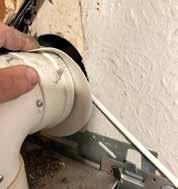
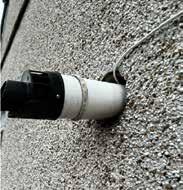

Keith Donaldson noticed this poorly installed chimney/ flue terminal when he was working in a neighbouring property. It had not been cut to the correct length –and is fitted upside down.

Richard Syrett found the boiler terminated into a brick chimney/ flue and out of the top of the stack. A new boiler has now been fitted using a different chimney/flue route.
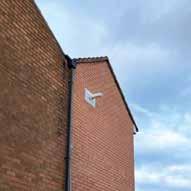
James Griffiths was asked to service an ILFE gas fire that had been fitted in 2018. The flue flow test failed because the chimney/flue had been bricked over. The appliance was disconnected and made safe.
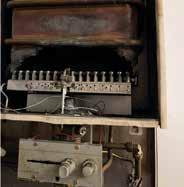
The owner of this water heater in a food takeaway had been using it for months with no front cover and his own heat shield. Paul Goodchild disconnected it and made safe.
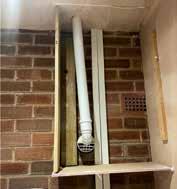
Martin Ault was carrying out a boiler service when he saw that the chimney/flue had been altered to accommodate an extension. The air intake had been boxed in and the outer chimney/flue had been extended through the roof. The boiler was made safe, and the chimney/flue has been extended correctly.
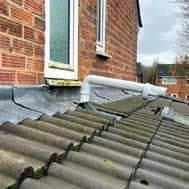
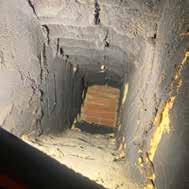

There’s a prize for the best photo sent in (in our opinion). Please remember to take your pictures at high resolution and email them to: editorial@registeredgasengineer.co.uk
This month iHeat is giving away a 25-piece Wera Kompact tool set with tools and bits from Wera’s top 20 for plumbing and heating systems.
iHeat is one of the fastest-growing and most trusted boiler installation companies in the UK, seeing major success due to its forward-thinking approaches, as well as the convenience it provides for its engineers.
iHeat operates with a network of more than 300 self-employed installers all over the country, each having the freedom to manage their own workload at the touch of a button via the straightforward iHeat app.
The simplicity of iHeat’s strategy means engineers never have to worry about working out of their local area or working into the evening. iHeat takes care of all the logistics, invoicing, materials and customer communication for any job, freeing up installers to work as much or as little as they’d like.
Some installation companies carry out disruptive and delaying location assessments, whereas iHeat provides time-saving online quotes in as little as 60 seconds.
iHeat covers all types of boiler installation, including upgrades, conversions, servicing and back-boiler removals. Installing highly efficient and eco-conscious boilers from the most well-known and celebrated manufacturers in Europe, iHeat fuses simplicity with innovation, representing the future of the domestic heating industry. www.iheat.co.uk
This month’s winner is James Griffiths from Cholsey. Congratulations!
Rated ‘Excellent’ on
At Continal, we have the UK’s widest range of underfloor heating systems. Combine this with our expert sales advisers, and you can see why Continal always provides the best solutions.
We design all our systems to work with any heat source, floor construction and covering. Whatever your project we have the solution.
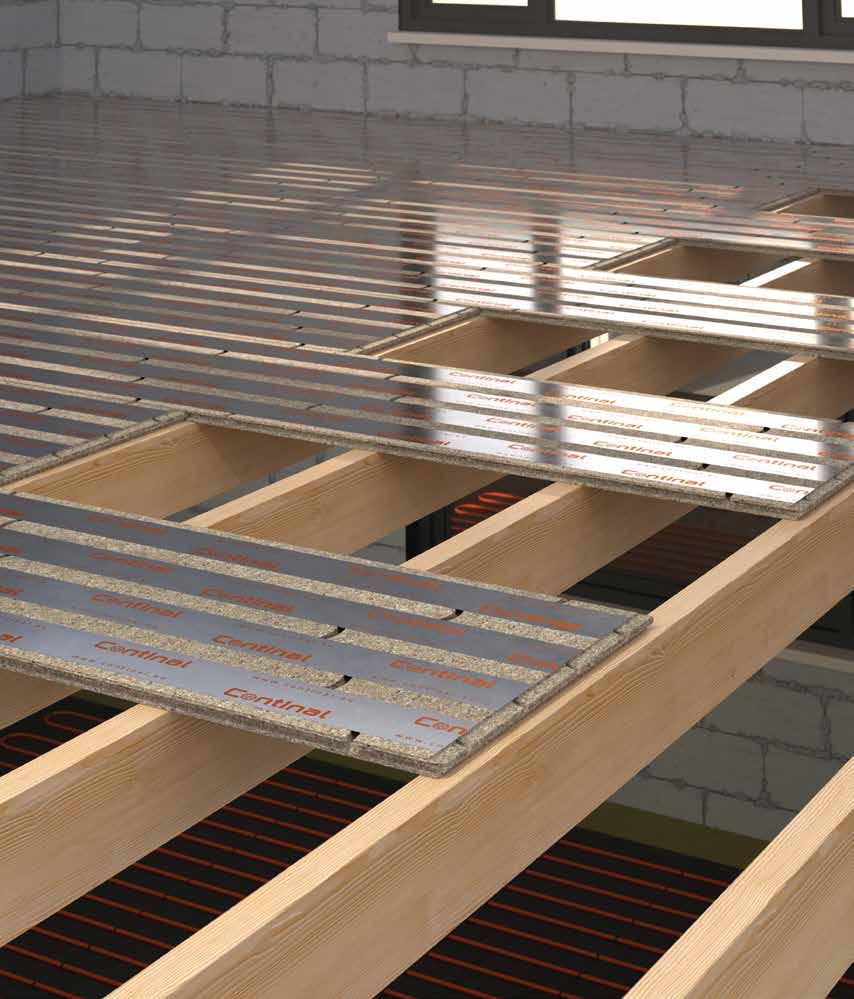
0333 800 1750
www.continal.co.uk
“I’ve used many UFH companies and Continal are the best by far!”
Date issued: 20 June 2023
This
Introduction
Gas Safe Register has been advised by the manufacturer of an issue regarding gas inlet connector elbows fitted to some Belling gas hobs manufactured after May 2019. This issue concerns only the models detailed in the table below installed in holiday caravans, lodges and residential park homes.

Safety concern
Belling has identified a potential issue with the silver gas inlet elbow connector on some gas hobs breaking when installed in holiday caravans, lodges and park homes. If the inlet elbow is as shown in Figure 1 (below), the elbow must be replaced.
To eliminate this issue, the silver gas connector (if as described previously) must be changed as outlined as below. This can be either another elbow or a straight coupling, depending on the pipe configuration.
GDHA has a limited number of suitable connector fittings available that can be supplied. Please contact Belling on 0343 212 1088 or by email at contactus@belling.com, quoting part number 082671464. Further details on how to
carry out this work can be found in GDHA Technical Bulletin TB 451.

Safety notices have also been added to the manufacturer’s website at: www.belling.co.uk/en-gb/ safety-notice n
Models affected
The full list of models affected is:
444410131 BEL GHU602GC Sta
444410132 BEL GTG60C Blk
444410133 BEL GHU75C Sta
444410134 BEL GTG75C Blk
444410193 ST GTG60C Blk
444410443 BEL GHU602C LPG Sta
444410444 BEL GTG600C LPG Blk
444410446 BEL GHU75C LPG Sta
444410447 BEL GTG75C LPG Blk
444411638 BEL GHU753RI STA
The Office of Product Safety and Standards (OPSS) has published a series of product recalls for several gas hob manufacturers and their products. The affected appliances are listed below.
You can find a full list of the appliances affected at the OPSS website at: www.gov.uk/ product-safety-alerts-reportsrecalls, search for ‘gas’.
The following information is included in the product safety recall.
Hazard
The elbow on the connecting pipework of affected gas hobs can fail, resulting in a significant
gas leak, regardless of whether the hob is switched on and in use. Hazards resulting from a gas leak include burns, fire, explosions, and poisoning from inhalation.
The risk levels vary from low risk to serious risk, with the risk presented from fire and explosion being the worst case. The risk of fire and explosion in traditional built residences is high risk, and the risk of fire and
Appliances with product safety reports
Appliance
explosion in a caravan or leisure homes is serious risk.
Corrective action
OPSS has issued suspension notices that require manufacturers to stop the supply of specified models of gas hobs with certain elbow joints. Where an affected appliance is installed in the property, the responsible person needs to be made aware and directed to
contact the manufacturer of the appliance for further assistance.
If there is a concern for safety, gas engineers are advised to follow the guidance contained in IGEM/G/11, the Gas Industry Unsafe Situations Procedure.
The listed appliances are correct at the time of writing, but please be aware that the OPSS website may have been updated since publication.

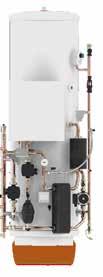
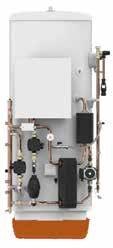
The versatile cylinder range comes ready to plumb, featuring all of the advanced controls you would expect from Mitsubishi Electric.
■ Compact cylinder dimensions with slimline and standard options, allows versatile product placement
■ Designed to work with Mitsubishi Electric control systems for complete peace-of-mind


■ High capacity coil heat exchanger provides fast and efficient domestic hot water heat up
■ Diverter valve accessory supplied for simplified heating and hot water system installation

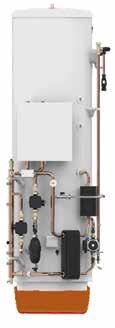
■ Remote control, monitoring, maintenance and technical support with MELCloud
There’s an Ecodan cylinder for every home.

Date issued: 20 June 2023
This Industry Standard Update provides an overview of the recently published revised Industry Standard IGEM/GM/5 Edition 4 - Electronic gas meter volume conversion systems, and highlights areas of significant change that the revision has introduced.
Introduction
During April 2023, IGEM published a revision to IGEM/ GM/5 Edition 3 Electronic gas meter volume conversion systems(1). IGEM/GM/5 Edition 4 (Communication 1817)(2) supersedes Edition 3 (Communication 1730), which is now obsolete.
The revision to this standard comes into effect immediately.
To allow registered businesses time to carry out internal update training to reflect the technical requirements of the amended standard, Gas Safe Register will inspect to the new requirements of this standard from 1 October 2023.
However, this should not restrict businesses from applying the specification sooner.
The following is a brief overview of the amendments made to IGEM/GM/5 Edition 4.
General
Table 1 in Section 2 has been updated to include Electronic Index and Advanced Meters.
Due to the devolution of power to the Scottish, Welsh and Northern Irish assemblies, Section 3.1.1 highlights that there may be variations to the legislation for each of them and consideration of their requirements.
Section 3.1.6 states that certification for explosion protection should now conform to DSEAR Regulations as opposed to the ATEX Directive in the previous document.
Section 4: Rules for selection and configuration of electronic volume conversion system (EVCS)
Guidance is given in Sections 4.1 and 4.2 on the considerations that should be taken when selecting the appropriate
correction device and advises that Table 1 can be used to aid in the selection.
Section 4.3 gives guidance on how to set the correct pulse output significance on any EVCS to match the pulse input significance.
The Automatic Meter Reading (AMR) provider should be contacted to confirm what options are available if the meter pulse significance cannot be used, as per Section 4.3.1.2.
The width of pulses for reed relays and for electronic switches is given in Section 4.3.2.
Commissioning procedure has been added if GSM system is used to communicate between the device and a head-end system. This configuration should be developed and tested with the head-end system to ensure the correct configuration, as errors would result in further site visits.
The pre-installation tests added to Section 4.4.1 state that it’s optional to carry out preinstallation tests: however, if completed, they should always be carried out in a nonhazardous area on site. Any changes to the programme identified during testing after installation should be recorded.
The full procedure for pre-installation checks is given in Section 4.4.2.
It may be possible to program conversion systems with several parameters, by using an external computer, as stated in Section 4.4.3.
Section 5: Design and installation
Section 5.1.2 advises that access to any part of the meter should not be unduly impeded by the electrical circuit, and that the meter index or any statutory
labels must not be rendered difficult to read.
Pipework and wiring should be arranged in a way that doesn’t create a hazard or restrict access for service and maintenance work, as stated in Section 5.3.1.3.
Section 5.4.2 adds that if the additional outputs are used, then DSEAR must be followed and IGEM/GM/7A Electrical connections for gas metering equipment (communication 1731)(3) and IGEM/GM/7B
Hazardous area classifications for gas metering equipment (communication 1732)(4) shall be followed. The manufacturer’s instructions should be followed to protect the device from incorrect use of the outputs. If the conversion device is certified for use in hazardous areas, then its outputs should be treated as if they were in a hazardous area.
Figure 4 has been added, showing sealing points.
Section 6: Commissioning
This commissioning procedure assumes that the EVCS being installed complies with BS EN 12405-1:2021 Gas meterConversion devices Volume conversion(5). See Section 8: Monitoring, if using an older EVCS.
Section 6.5.1 advises that the operating temperature and pressure of the installation shall be observed by the person carrying out the checks, and judgement should be used to confirm the operation effectiveness of the system by checking the volume input, temperature and pressure values indicated by the device. Section 6.5.2 and 6.5.3 should be consulted if there are any doubts about the effectiveness of the transducers.
Values of acceptance criteria are given in Section 6.5.2 as no changes in pulses for LF systems and a tolerance of less than +/- 0.001% of pulses for HT systems.
Operatives shall ensure there are no gas escapes on the instrumentation pipework and all wiring terminations have been reconnected with covers correctly fitted to all units as per Section 6.6.1.
The conversion device shall be disabled and protected by a seal, as stated in Section 6.6.3.
Section 8: Monitoring, inspection and maintenance Section 8.2.1 has added that, when checking for intrinsic safety, factors relating to results of previous inspections, signs of deterioration and classification of the area should all be considered.
Unless an expert documented analysis has been conducted, the inspection period shall not exceed three years, as stated in Section 8.2.2.
Additional checks required for equipment during maintenance have been added to Section 8.2.4, including barriers for equipment in hazardous areas, casings and displays are in good condition, weather protection is adequate, and earth bonding is suitable. Also confirm that the serial number relates to the make and model of the device and contact the meter asset manager for guidance if there are any issues.
Section 8.3.1 states that the owner of any electrical equipment connected to or installed on a gas meter shall be responsible for the safe and efficient operation of the equipment.
Appendix 8
Pressure testing has been added plus sections covering safety precautions, testing, combined strength and tightness testing and final leak checks. Figure 21 shows a typical layout for testing ECVS pressure transducer. n
Bibliography
(1) IGEM/GM/5 Edition 3 Electronic gas volume conversion systems (Communication 1730)
(2) IGEM/GM/5 Edition 4 Electronic gas volume conversion systems (Communication 1817)
(3) IGEM/GM/7A Electrical connections for gas metering equipment (Communication 1731)
(4) IGEM/GM/7B Hazardous area classification for gas metering equipment (Communication 1732)
(5) BS EN 12405-1:2021 Gas meters.

Conversion devices Volume conversion
Summary
As previously stated, this Industry Standard Update is only a brief overview of the information contained in the amended standard. Registered businesses should be aware that they have a responsibility to ensure that they are fully apprised of all the requirements of the whole published standard and their practical application.

If you have called the Gas Safe Register Technical Helpline recently, you will probably have been asked what part of the UK you are working in. The reason they ask is because there are differences in the regulations across the UK and to make sure they give you the right information for your location.
The regulations differ depending on whether you are working in England, Scotland, Wales, Northern Ireland, Guernsey, the Isle of Man or Jersey.

These include Building Regulations Approved Documents in England, Technical Handbooks in Scotland, Building Regulations Approved Documents in Wales, Technical Booklets in Northern Ireland, Technical Guidance Documents for Jersey, Technical Standards for Guernsey and Building Regulations for the Isle of Man.
There are many differences from nation to nation, ranging from compliance with administration requirements to technical differences and energy efficiency regulations.
Under the Building Regulations in England and Wales, for example, gas boilers, gas fires and unvented hot water cylinder installations must be registered with Building Control, which will result in your customer receiving a Building Regulations compliance certificate for the appliance installation.
The customer should keep this document and will need to produce it in the future if they decide to sell the property. This process is not mandatory in Scotland or Northern Ireland.
There are also differences in the Building Regulations regarding the ban on the use of combustible materials when replacing gas appliances where the flue outlet or terminal assembly forms part of the external wall in high-rise buildings (due to fire regulations). The Technical Handbook in Scotland classifies a high-rise property as any building over 11 metres high, whereas England, Wales and
through, in contrast to other parts of the UK. It also requires a CO alarm for any new appliance fitted in a private or rental property with an interconnecting space, for example, a garage. Where rental properties do not comply with local CO alarm requirements, this would not automatically deem any the gas appliances to be classified as unsafe. However, the landlord would be non-compliant with the
Northern Ireland classify a high-rise building as anything over 18 metres high.
Carbon monoxide alarm requirements have also varied considerably due to legislation changes covering both the private and rental markets. In England and Scotland, for example, there is no requirement to have a CO alarm in a room that contains cooking appliances; but they are required in Wales and Northern Ireland.
Scotland requires a CO alarm in any room where a flue passes
regulations, and could face a fixed-penalty fine or prosecution by the local authority.
Energy efficiency regulations also differ across the regions. The Boiler Plus regulations in England that cover combi boilers provide options for the type of energy-saving boiler interlock controls that must be installed with the appliance. Gas engineers and homeowners
“Engineers who live close to the borders of two nations and work in both areas will need to have knowledge of the regulations for both nations and apply them accordingly.”

who fail to comply with this regulation could face prosecution and financial penalties imposed by Building Control. Trading Standards can also issue sanctions against gas engineers who do not comply.
Kitchens
Until recently, internal kitchens were covered by three separate Technical Bulletins to cater for the UK nations to provide information about the requirements in the different regions of the UK. However, these have now been withdrawn and are being reviewed currently to ensure they meet the requirements of the relevant standards.
Engineers who live close to the borders of two nations and work in both areas will need to have knowledge of the regulations for both nations and apply them accordingly, depending on which side of the border they find themselves working from day to day. If you travel into another area, either on a temporary or permanent basis, make sure you do your research to ensure you’re compliant and working to the correct regulations. n
New homes are generally considered to be more energy efficient than their older counterparts, thanks to modern Building Regulations and better insulation. But the results of a boiler study by comparison website Uswitch.com might surprise you.
After a winter of record high energy bills, consumers may be wondering how efficient their boilers are and what they can do to improve the overall efficiency of their home.
Many different factors affect how hard a boiler needs to work to heat hot water and warm a property to the right temperature, including the age of the property and whether it is detached, semi-detached or mid-terrace.
To discover which property type and age has the greatest impact on the boiler’s efficiency, a study by Uswitch analysed Energy Performance Certificates (EPCs) across Great Britain. Using the EPC ratings for the energy efficiency of the hot water system and the main heating system, all the properties studied were then given a final boiler efficiency score and compared, based on their age and property type.
Taking into account both hot water and heating efficiency, the study found that homes built between 2003 and 2006, and from 2007 to 2011, were the most efficient overall.
Homes built between 2003 and 2006 scored evenly for both heating and hot water efficiency, with a final score of 8.46/10.
Homes built between 2007 and 2011 are the most hot water efficient (9.23/10) but only the third most heat efficient (7.69/10).
Properties built after 2012 were found to be only the fifth most efficient despite being the most modern homes analysed, based on a combined final boiler score of 5.39/10. And although these modern homes are the most heating efficient, with a score of 9.23/10, they are the second least hot water efficient, scoring just 1.54/10.
Meanwhile, homes built a century earlier, between 1900 and 1929, have an overall boiler efficiency score of 6.16. In fact, the oldest homes analysed, those built before 1900, ranked higher than properties built between 1950 and 1982, and 1991 and 1995.
When comparing the efficiency scores by property type,
detached properties had the lowest overall boiler score, scoring just 1.43/10 on average, with the same figures for heating and hot water efficiency. This is significantly less than enclosed
mid-terrace houses, which scored the highest (8.57/10).
Enclosed end-terrace and enclosed mid-terraced houses are the properties most conducive to boiler efficiency,

“Older homes tend to have older cylinders, which means a homeowner could be wasting a substantial amount of energy, not to mention money, through the cylinder wall. Modern cylinders should lose no more than 2kW/h a day and some lose as little as 1kW/h; copper cylinders with loose red jackets can lose up to 4kW/h, but the bigger the cylinder, the more it will lose.

domestic hot water via the cylinder. It’s also worth considering a cylinder that will support the addition of other renewable heat sources, such as solar thermal.”
Other energy saving tips include:
• Use OpenTherm controls. They will always support energy efficiency, but if the system isn’t OpenTherm, then consider upgrading the room thermostat to the best there is.
• Understand how to use the heating controls. This is vital and many households lose money by heating an empty property simply because they forget or find it difficult to change the programme.
• Insulate everything, especially the roof.
Thinking about a heat pump
Heat pumps are being hailed by many as the next mainstream heat source over the coming decade, as the installation of gas boilers begins to be phased out. But there is uncertainty and confusion over their suitability for use in certain properties, particularly older buildings.
Mark Wilkins, technologies and training director at Vaillant, says there are several myths around heat pumps that need to be dispelled if any switch to low-carbon technologies is to be successful.
scoring 7.14 and 8.57 respectively. These homes are also referred to as ‘back-to-back’ buildings, with two rows of terraces built together. End-row properties only have two external walls, while mid-row properties have just one, compared to detached properties, which have four outside walls. Because terraced homes have fewer external walls than other
properties, the rate of heat loss is generally lower.
Improving hot water efficiency What can people living in properties with poor hot water efficiency score do to make their heating and hot water more efficient?
Mike Hook, training manager at Intergas Heating, thinks it’s all about the cylinder. He says:
“The best solution is to upgrade the cylinder. But a good-quality insulation jacket is the next best thing and its effect will be immediate. Don’t forget the pipes in the airing cupboard: they should be insulated too. It’s a good idea to check how long the cylinder lasts before it needs to be heated again; it should only take a day or so to work it out and it might mean that the water only has to be heated for an hour a day rather than twice a day. This could be a real money-saver.
“If it’s feasible to upgrade the cylinder or boiler, homeowners should seriously consider a system or control that allows for OpenTherm heating and priority
Mark says: “The issue with the narrative is that it suggests there is a one-size-fits-all approach to fitting a heat pump, and that all properties will need to make significant investments in their building fabric to make a heat pump possible.
“Taking a fabric-first approach and ensuring insulation is up to standard is essential when looking to maximise efficiencies in any property. But a property with loft insulation, cavity wall insulation and double-glazing is usually ready to support a heat pump with limited improvements.
“Older properties with no energy efficiency upgrades may require more investment in insulation. However, insulation will make any heating system work more effectively and will always be a good investment, particularly as we look to reduce our energy usage.”

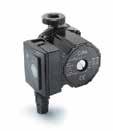



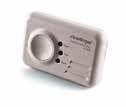

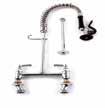
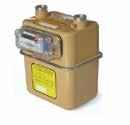



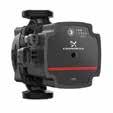
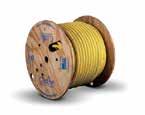
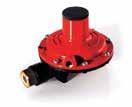

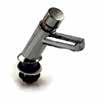

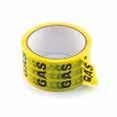









Gas Safe Register’s Technical Team answer some of the questions that they most regularly receive on the Technical Helpline.
The calls received by the technical helpline vary considerably. Most relate to domestic installations and can be about various issues – from needing guidance on an unsafe situation to the requirements for a valid landlord’s gas safety record. The team also receive calls ranging from large commercial gas pipe installations to the requirements for a commercial catering installation.
Q: When testing an appliance, what is the correct working pressure that should be available at the gas meter test point?
A: The working pressure recorded at the gas meter outlet test point should be between 18.5mbar and 23mbar. This should be obtained when the highest-rated appliance is operating in its highest normal operating mode and with any other appliance run at 50 per cent load.
Any pressures recorded outside this range must be reported to the supplier. Guidance on this subject can be found in IGEM/G/13: Domestic supply capacity and operating pressure at the outlet of the meter
Q: Is equipotential bonding always required on gas installation pipework?
A: Not always. You are not required to determine whether bonding is required, but to report to the customer if the bonding does not appear to be present or appears to be incorrectly located or sized.
You should advise the customer that they need a suitably qualified electrician to determine whether bonding is required. Technical Bulletin 102: Location of protective equipotential bonding on gas pipework in domestic buildings provides guidance on this.
Q: Can gas pipework be installed in a protected area, such as a fire escape route?
A: If gas pipework is installed in a protected area, it must be done using one of the following methods:
• Steel pipework with screwed or welded joints
• Continuous length of copper pipe with no joints
• Continuous length of corrugated stainless steel pipe that has been confirmed by the manufacturer to withstand fire test A in BS EN 1775 Annex A. You should also refer to BS 6891: Specification for the installation and maintenance of low-pressure gas installation pipework up to 35mm (R1/4) on premises
Q: Should a meter room/ enclosure that contains multiple meter installations be ventilated?
A: Yes it should because of the wider risk posed by multiple meter installations. The importance of notifying the building owner and the gas supplier must be emphasised on the warning notice. See IGEM/G/11: 4.10a, Table 6 for ventilation for meter banks, and IGEM/G/5, Section 8.4.
Q: If I find a safety issue, must I report it to RIDDOR?
A: No, not every incident requires a RIDDOR. There are two separate types of RIDDOR for gas: 11(1) Gas Incident and 11(2) Dangerous Gas Fittings. Full descriptions are found in IGEM/G/11 (the current version of the Gas Industry Unsafe Situations Procedure), and further information is in Technical Bulletin 002: A, B, C and D, as appropriate.
In general terms, and not exclusively, RIDDOR 11(1) applies when someone has died, become unconscious or taken to hospital in connection with gas issues and is the responsibility of the ESP to report.
RIDDOR 11(2) applies to situations where people could be injured due to materials or workmanship etc.
Q: Do all commercial kitchen extraction systems require an interlock?
A: All new extraction systems must be interlocked with the gas supply. When an existing extraction system is extended or modified, or a Type B appliance is replaced below an existing canopy, then the system should be upgraded to a type that contains an interlock system. If a Type A appliance is replaced, then upgrading to an interlock system must be recommended. You can find more guidance in IGEM UP19, IGEM/IG/2 and BS 6173. n
• You can call Gas Safe Register’s Technical Helpline on 0800 408 5577, choosing Option 2. The helpline is open from 0800 to 1800 Monday to Friday and from 0830 to 1230 on Saturday. You can also ask a question via email at: Technical@GasSafeRegister. co.uk
You can read and download all Technical Bulletins by logging into your online account at www.GasSafeRegister. co.uk/sign-in
Martyn Bridges, director of Technical Services at Worcester Bosch, has some handy tips to help your customers save money on their energy bills.
The third quarter of 2023 is likely to see the average energy bill come down from record highs. And although we’re enjoying the summer months now, which means less dependence on home heating, it’s always a good time to get into good habits when it comes to heating usage.
Making changes to the home’s heating set-up can help save hundreds of pounds throughout the year. There are several ways to cut costs quickly and cheaply, helping to save energy and live more sustainably.
Save £105 a year
1: Take control
Turning down the room thermostat by 1°C could save up to a £105 a year and save 200kg of CO2 emissions. Aim for 17°C when the property is empty, and a cosy 18-21°C when people are at home.
Save £70 a year
2: Shorter showering
Cut down on showering time, ideally to around four minutes. A speedy shower will also significantly reduce the amount of water used. Taking the steps to use showers instead of baths and using a timer to measure how long the shower takes is a simple step towards lowering energy usage.
Save up to £190 a year
3: Keep heat in Keep that heat trapped inside the home. Don’t forget to draughtproof tiny gaps such as keyholes and letterboxes as well as windows and doors. Adding an insulated jacket to the hot water cylinder will reduce heat loss and keep the water hotter for longer. .
Did your Power flush fail?

Save up to £30 a year
4: Switch off
Don’t forget the small changes, too. Shutting down devices and appliances rather than leaving them on standby can net an extra £30.
Try POWDER FLUSH! We succeed, where others fail!
Our Patented technology can clean out hard sludge build-up in any size pipe!
•We can clean microbore, one pipe and plastic pipe systems.
•We offer zero risk “No fix No fee deals” If we can’t fix it, you don’t pay anything
•Earn £100 Commissions for completed client referrals
•We can fix blocked systems and blocked heat exchangers.
•No need to replace or re-run pipes.
What’s best for which installation: plastic or metal? Richard Bateman, product marketing manager at RWC, looks some of the factors, including cost, ease, sustainability and performance.
There’s more to deciding on metal or plastic than you might think. As a general rule, copper is the most commonly used metal in plumbing pipework: the only exception is in some healthcare piping applications, where stainless steel is seen more often.
Both copper and plastic pipes are used across a range of new-build and retrofit applications. Plastic pipes are typically made from polybutylene or cross-linked polyethylene (PEX), which can be used separately or together.

For the most part, there are three situations where using metal is more suitable. The first is for gas applications, where copper is the choice. The second is for direct connection to a boiler.
The third situation where metal has an advantage is where the pipework’s on show and it needs to look a certain way. While you can paint plastic pipes, most people agree that metal definitely has the edge when it comes to aesthetics.
After that, plastic and metal are pretty much interchangeable, even for applications such as the internal water supply.
There’s no doubt that plastic is easier to work with than metal, and that’s important when you’re trying to push through heavy workloads or deal with tricky installations.
Most metal pipes come in rigid straight lengths, which need to be cut to size and fitted to shape. Plastics are often supplied in coils, which means you can run continuous lengths with fewer joints and in confined spaces.
Plastic is particularly good for
retrofit, where the pipework challenges are rarely straightforward. Because it can be formed into loops quickly and easily, plastic is also ideal for underfloor heating or when you’re running pipes through joists or in confined spaces.
It’s not just space that’s tight either. With the rising cost of materials and tight budgets, that’s another reason to think plastic.
Cost and performance
Metre for metre, plastic pipes come in at about one-quarter of the cost of metal. And, unlike metal pipes – which require connections at regular intervals – plastic can bend around corners and be manipulated into place without extra fittings, saving you money as well as time. Fewer fittings also means less risk of leaks and less remedial work, which is an important consideration when the majority of pipework is hidden.
Plastic is no more susceptible to rodent attacks than metal.
Rats and mice don’t discriminate: they have phenomenal teeth that can eat through anything in their way, whether it’s bricks, concrete or even metal. The issue here
isn’t the pipe, it’s the creature.
Plastic scores highly on durability too. When water freezes, copper pipes don’t expand, which can result in damage to the pipe.
What type of plastic?
Head to head, plastic comes out ahead of metal on many measures, not least because it’s cheaper, more durable, and easier to use. So sometimes the choice isn’t between metal and plastic but about which type of plastic.
There’s a binary choice: polybutylene is a highly flexible ‘bendy’ pipe that lays flat straight from the coil, while PEX also comes in coils and can be bent but is a little more rigid and harder to manipulate. Actually, you could use either for pretty much any application, but in reality they’re more suited to specific situations.
Due to their material properties, polybutylene pipes are flexible and easy to manipulate. When you need a bend, you simply create the shape you want, and it will hold in place with pipe clips. This
makes installation quick and easy, saving time and effort. It’s best suited for anywhere requiring non-linear pipework, including underfloor and retrofits or, for example, a dishwasher. It can also be used for straight applications, making it ultra-flexible.
However, there are times when a more rigid application is required. This includes a straight run to an appliance or up through a wall. Here, PEX is the better option, especially because it’s available in three colours: white, blue, and red, which means you can clearly identify between cold and hot water supplies.
As with polybutylene, it’s versatile and can also be used in other applications, including underfloor, where their added
insulation properties are useful. However, because it’s a little less flexible, it will require cold form bends to hold its shape.
Tips and guidance
Whichever you choose, it’s important to follow the manufacturer’s instructions and install them correctly. Of these instructions, perhaps the most important of all is to make sure you’re using the right-sized pipe insert in solid-floor applications, high-risk areas and whenever you’re working through walls. Getting this right protects the pipe from damage caused by movement or thermal expansion. n
www.jgspeedfit.co.uk
“Plastic comes out ahead because it’s cheaper, more durable and easier to use.”
Where do you find new customers? Do you rely on word of mouth, the local paper, or are you advertising online through social media? Registered Gas Engineer looks at the advertising options available.
Finding new customers is a vital part of any business.
But with so many advertising options available, choosing the best way to market your business can be difficult. It often depends on the type of work you carry out: do you mostly service boilers in people’s homes? Do you do commercial work? Or maintenance work for landlords or housing associations? Different advertising channels will give you better access to different customers, so you make sure you choose the right one for you.
Use the Register
Because you are a Gas Safe registered business, customers can find your details and check your qualifications through Find an Engineer on www.GasSafeRegister.co.uk

The Register advertises regularly online, on TV and in the national press, encouraging consumers to find and check their gas engineer online, and reminding them that Gas Safe Register is the only official registration body of gas businesses and engineers in the UK, Isle of Man, Jersey and Guernsey. This helps everyone be sure that they are only using registered, competent engineers.
Word of mouth
Word of mouth is easily the cheapest form of advertising and more than 80 per cent* of you regularly receive work because of it. It works because it’s all down to your reputation: when you do a good job, and people will use you again and recommend you to their friends and family. This type
of advertising is free, reliable and people will always feel more comfortable calling you if you’ve been recommended by someone they know.
The advantage of word-ofmouth advertising is that it doesn’t require any extra work from you, other than concentrating on doing a good job. One drawback is that you have no control over when or if your customers will recommend you, or whether these recommendations will result in work during times when you are available.
Having a dedicated website will make your business look more professional. People who are given your name are likely to look you up online before they pick up the phone, and a website that sets out what your business does, your qualifications and shows examples of your previous work will help reassure them that you’re the real deal.
The cost of building a website varies depends on its complexity. A bespoke site could cost £1,000+ but many website hosting companies have cheaper options, with simple drag-anddrop templates that you can use to create your own site. A unique domain name, such as www.yourname.co.uk, can be added to these websites for a small extra cost.
A website on its own may not help you attract new customers, so if you want a site that actively boosts your business, you’ll need to implement search engine optimisation. This means that if a prospective customer searches for ‘boiler repair’, for example, your website will appear near the top of the list of search results. Paid-for Google advertising can help too.
Fewer than 20 per cent of you say you use social media to attract new customers*. But being active on social media is
a good way to establish yourself and to give existing customers an easy way to direct people to you. You can use Twitter, Facebook and Instagram to promote your businesses by posting examples of your work and letting existing customers know of any offers or promotions.
Social media is really useful for interacting with other gas engineers, and to encourage repeat business by reminding customers to check when their annual service is due, or to have their systems serviced or upgraded in the summer months while your workload may be quieter.
Many channels also offer paid-for advertising options to help you boost your posts so that they are seen by people who have expressed an interest in heating, for example, or who live in your area.
Online directories enable people to search for recommended tradespeople in their local area. You’ve probably heard of some of the more well-known directories such as Checkatrade, Rated People or Which? Trusted Traders.
Each directory varies slightly, but most let you include details of your business, often with images of your work and details of your qualifications. Potential customers then search the directory to find relevant businesses in their area. Many encourage customers to post reviews of tradespeople’s work, while some will carry out their own checks on new businesses before allowing them to advertise on their site. ■
*2023 Registered Gas Engineer reader surveyDon’t forget to make the most of the free Marketing Toolkit available to you on Gas Safe Register’s website. You can use the Gas Safe logos on your vehicles, clothes and promotional materials. This seal of approval is recognised nationwide and has a powerful impact on the perception of your business and team.
Just log in to your online account at www.GasSafeRegister. co.uk/sign-in and download the toolkit for logos, templates and advice on how to create your own advertising and stationery.
“Many social media channels offer paid-for advertising options to help boost your posts.”
Are you fully insured if something goes wrong? We look at the different policies available and outline what you need to consider before buying insurance.

Public liability insurance isn’t a legal requirement but it may cover any legal costs and compensation claims if a customer believes you have damaged their property. Compensation costs can mount up – consider how extensive the water damage could be if a radiator fitting you install fails, or if you drop something and it damages the floor or wall.
The limit of public liability cover can be set anywhere from £1 million to £10+ million, and may be a requirement if you work for commercial or public-sector clients.
Employers’ liability insurance is a legal requirement for any gas engineer who employs another person. It will pay compensation if your employee is injured or becomes ill as a direct result of the work you ask them to do. By law you must have at least £5 million of cover, and significant fines can be imposed if you are not properly insured.
You may not need this insurance if the person you are employing is a family member, but
if you do have it, the insurer must be authorised by the Financial Conduct Authority.
Professional indemnity insurance provides cover if a mistake you make causes your customer financial loss or reputational damage. It’s is not the same as public liability insurance, which can cover practical mistakes such as leaks or damage, but covers the potential consequences of any misleading advice or statements you might make. If your business includes any kind of consultancy work, this may be worth considering – but it is not a legal requirement.
When you’re self-employed, you don’t get sickness benefits if you fall ill and are unable to work. Income protection insurance can provide a tax-free monthly amount to help cover your bills if you are signed off or unable to work.
Cover varies, depending on the plan, but some will maintain your average income, while others will pay your mortgage or
essential bills and living expenses. Always check the small print before you purchase – some will cover you from the first day you are unable to work, while others require you to be off work for a certain amount of time before you can make a claim.
Contract works insurance tends to be considered by bigger companies carrying out more extensive property renovations. It protects against any losses incurred if a structure you’re working on is damaged before the job is completed, such as through fire or building collapse.
This includes covering any materials or labour already used on the project, protecting you and your customer from being out of pocket. It is usually an add-on to other insurance policies, rather than being a policy on its own.
Legal expenses insurance covers costs incurred during disputes such as unpaid bills, personal injury or unfulfilled contracts. This can be standalone but many insurance policies offer cover as
standard or an optional extra. Before you buy, check that you don’t already have it as part of another policy. The terms of the cover can vary between insurers, so make sure you know exactly what you are covered for.
Any vehicle you own must be insured by law but personal vehicle insurance is different from insuring a business vehicle. If you own a van or use your personal car for business, make sure you’re specifically covered for business use. Otherwise, if there is an accident while you’re transporting tools or goods in your vehicle, you might not be covered.
Make sure that your business use insurance also covers contents such as tools in case they are damaged or stolen – or buy separate tools insurance.
If you have a young employee or apprentice, check with your insurer that they are covered before you let them drive the van. Some companies will not allow additional drivers below the age of 25, or charge you a premium for doing so. n
Your workwear isn’t just about looking good: it’s about ensuring your safety and comfort on the job.
Nick Paulson, UK sales manager for Carhartt, looks at what to consider when choosing your workwear.

Choosing the right workwear not only protects you but it can also enhance your overall work performance. Comfort and mobility are key factors to consider when selecting workwear. You will be spending long hours on your feet, bent down, maybe climbing ladders, and manoeuvring through tight spaces. So it’s important to choose clothing that gives you freedom of movement and provides ample room to perform tasks comfortably.
That can be as easy as looking for trousers or shorts that include features like a stretchable fabric to enhance flexibility, and extra room so that when you bend down you are not restricted or feel cramped. Similarly, opt for T-shirts, hoodies and jackets that provide a relaxed fit without compromising functionality.
Women should look for a brand that designs workwear specifically for them to make sure that it fits in the right places, particularly in the waist and hip.
Remember, when you look good and feel comfortable in your workwear, it not only reduces physical strain but also promotes a positive mindset, enabling you to focus on your job more effectively.
When it comes to work boots, prioritise safety, durability and comfort. Look for boots with reinforced toes and slip-resistant soles to protect your feet from potential accidents. And make sure that they provide proper ankle support and cushioning to minimise fatigue during long hours on the job. In the warmer

months, or for work inside, you can consider lighter, trainer-style shoes.
Gas engineers often work in environments where you can easily graze your skin or knock your legs. Protective trousers or, in warmer weather, shorts, are crucial to shielding your legs from potential hazards such as sharp objects and dust. Opt for trousers or shorts made from durable materials that don’t rip, and for features such as reinforced knees, space for knee pads and multiple pockets for convenient tool storage.
Layer up
Working in different weather conditions requires adaptable clothing. Wearing layers means that you can adjust your clothing according to temperature changes throughout the day. Start with a moisture-wicking base layer such as a T-shirt to keep you cool and dry. Add a hoodie or sweatshirt for warmth and insulation.
Look for jackets that offer insulation, wind resistance and waterproof capabilities. Consider options with removable linings or multiple layers that enable you to adjust the warmth based on the temperature.
Don’t forget about protecting your head from the elements. Beanies and caps can be essential accessories: beanies provide warmth during colder months, while caps shield your face and eyes from the sun. Look for moisture-wicking and breathable fabrics. n www.carhartt.com
Judi Wheeler, national delivery director at JTL, spoke to Registered Gas Engineer to explain the process of taking on a plumbing and heating apprentice.
Many gas engineers start out as sole teaders, working on the tools during the day and often completing their business admin or following up on quotes during evenings and weekends.
But what do you do when your business grows and you’ve got more work than you can handle? Do you work longer hours and try to cram in as many jobs as possible? Or should you bring in some help?
Knowing when to expand
If taking on an apprentice is a relatively new concept for you and your business, it can be difficult to know where to start and whether your business is ready to take on someone new, especially if you’ve been a sole trader up to this point.
There are a few things you should consider to begin with, such as your current business plans and future prospects.
If your business is likely to expand in the near future, we
What are the benefits of taking on an apprentice?
There can be some misconceptions and worries around taking on an apprentice. This can be anything from the amount of paperwork involved, to people feeling that they don’t have enough time to train up new learners.
The reality is that once you have onboarded a new apprentice, many business owners will have an extra set of hands to help them with the practical work. This can enable them to take a step back from some day-to-day tasks and focus on the direction of the business. Some companies have told us that their earnings increased after taking on a new recruit.
When it comes to completing the paperwork, if you recruit an apprentice through JTL, we’ll help at every step of the process: from sourcing the right person to relieving you of the headache of admin once the apprentice starts
would suggest that now is the perfect time to consider taking on an apprentice. Not only will it give you the opportunity to share the day-to-day workload while you focus more on your business’s growth, but it will also mean that you can train up a new member of staff who is truly passionate about the plumbing and heating industry.
Equally, if you’ve been looking to employ someone and just can’t find the right person who ticks all the boxes, taking on an apprentice can be an alternative way to tackle the current skills shortage while futureproofing your business and sharing your invaluable knowledge and experience.
and continuing this support throughout the apprenticeship. We offer all our employers a dedicated JTL training officer, who will be assigned to your apprentice to help both them and you through the process, offering guidance and support.
In England, you’re responsible for paying your apprentice at least the national minimum wage for their normal working hours and any training they do as part of their apprenticeship. On our website, we explain your responsibilities as an employer and how the apprenticeship funding works.
Talk to an apprenticeship provider about taking on an apprentice so that they can help you decide whether it’s right for your business. When both parties are happy to progress with the process, you will be matched with the apprentice who is right for your business, or the provider can help you with your recruitment if you prefer to do that directly and talk you through any funding questions.
As an employer there are certain responsibilities that you will need
to be aware of before welcoming an apprentice into your business. For example, a training officer will visit to check that you take training and health and safety seriously: this is called a preplacement vetting check.
As soon as your apprentice starts, you’ll need to give them a formal induction to your company. You also need to talk to them about what you expect of them and what they can expect of you. If needed, your apprentice will also attend maths and English sessions to achieve their Functional Skills or Essential Skills Wales qualifications. ■
JTL is a leading apprenticeship provider in the building services engineering sector. As a not-for-profit charity, JTL offers advanced apprenticeships in electrical installation, engineering maintenance, mechanical engineering services comprising plumbing, alongside heating and ventilation. It serves around 8,000 apprentices and 3,800 employers in four regions across England and Wales. More information about JTL and the process of taking on an apprentice is at www.jtltraining.com

“Taking on an apprentice can be an alternative way to tackle the current skills shortage while futureproofing your business.”
Daikin has sponsored the Climate Zone at the BBC Earth Experience in London. Registered Gas Engineer caught up with the company to find out the kind of questions that visitors ask most often.
Q. Where would I put the heat pump in my house and how much space do I need?
There are lots of models of heat pumps that work for different homes. Outdoor heat pump units require little space. They are compact and can be placed on the outside walls of a home, in gardens or even behind sheds.
For example, the Daikin Altherma Monobloc is the ideal solution for homes with limited space. No additional indoor unit is required, apart from a hot water tank, and the heat pump can fit right under a window to save outdoor space.
Q. How much does it cost to install?
Although the initial installation of a heat pump is an investment, the government does offer financial support to those who embrace the technology.
The Boiler Upgrade Scheme launched in England and Wales in April 2022 to help the decarbonisation of buildings. It provides upfront grants of £5,000 to support the installation of air source heat pumps, and £6,000 for ground source heat pumps in homes.
Homeowners in Scotland can apply for a grant of up to £7,500 from the Home Energy Scotland Scheme to install a heat pump, with an extra £1,500 available to those in rural areas.
Q. How much does it cost to run and how much can I save compared with a gas boiler?
One of the biggest benefits of installing a heat pump, particularly given the high cost of gas, is the saving that can be made on energy bills. Running costs and
savings do vary per property and system but, on average, a heat pump will save 5-10 per cent in annual running costs compared with gas heating.
That means that, over the 15-year lifetime of a heat pump, an average three-bedroom house could save almost £3,000 compared to gas,* including the initial purchase and installation, maintenance and running costs. These savings more than double when replacing an oil boiler and could increase dramatically if a house also has PV solar panels. A larger four-bedroom home would save nearly £12,000 if using a heat pump instead of LPG.
While you can’t put a monetary value on it, air source heat pumps are much more sustainable and environmentally friendly than gas or oil-based systems.
Research conducted by Daikin has uncovered that 68 per cent of homeowners aren’t aware that heat pumps are significantly more energy efficient than gas boilers**. Gas boilers operate at 70-90 per cent efficiency compared to 300-400 per cent for heat pumps. This means that heat pumps are not only better for the environment but leave households far less exposed to price changes on the global gas market.
Daikin created and designed the Climate Zone to help visitors to the BBC Earth Experience learn more about the eco-heating solutions they could adopt in their own home. The zone is just outside the main venue.

Through sponsorship of the venue, Daikin wants to educate audiences on the benefits of low-carbon heating and cooling solutions and demonstrate its commitment to lowering the carbon footprint of UK homes and buildings.
The Climate Zone offers visitors the opportunity to discover how they can reduce their carbon footprint and find out more about air source heat pumps through a range of interactive digital tools and videos. This includes a model Daikin Altherma unit, set up in glass casing, for people to learn how the system works, as well as a Daikin air purifier which helps keep indoor air fresh and clean and remove harmful particles.
The Daikin Climate Zone team are on hand to discuss every aspect of making the switch to a heat pump, answer questions about the technologies and provide information on the financial support available to homeowners. The zone will be open to visitors for two years.
Q. Are they noisy?
When operating in standard modes, Daikin heat pumps produce less than 40 decibels of sound: that’s equivalent to a quiet library.
Q. Will a heat pump still heat my home if the temperature outside is low?
Heat pumps remain extremely efficient in winter temperatures. Even in outdoor temperatures, down to –25°C, they can provide a property with heating and hot
water. Norway, for example, has the most heat pumps per capita in Europe***, so they clearly work well in freezing temperatures. n
* Based on prices on 1 December 2022 and on a Daikin LT R Split WM system
** Daikin UK Brand Tracking Survey, December 2022
*** European Heat Pump Association
The Heat Training Grant is available for gas engineers in England to receive a discount of up to £500 towards the cost of heat pump training.
The grant is funded by the government and available through participating training providers as a discount on the cost of training. Several heating manufacturers are offering additional discounts and offers to trainees, which could be worth up to a further £500 in product vouchers and further training.
You’re eligible for the grant if you meet the following criteria:
• You work for a business with 250 employees or fewer, you are a sole trader, or you are unemployed
• You, or the business you work for, are certified by a competent person scheme for heating and hot water installations – in other words, if you are Gas Safe registered
• You, or the business you work for, haven’t already received more than £315,000 in government subsidies over the past three years.
If you’re eligible, you can claim the grant when you sign up with a participating training provider.
The cost of training will vary according to the centre and course you choose. The grant could cover most of the cost of a Level 3 heat pump course, which takes one week or less for an experienced gas engineer to complete. Additional discounts and offers from manufacturers should mean that the course cost is entirely compensated for,
as well as partially compensating for the time taken to complete the course.
Once you’ve completed your training, you should have all the skills you need to join a competent person scheme for heat pump installations. Joining one of these schemes will enable you to self-certify that the installation complies with the Building Regulations.
Competent person schemes are run by APHC, Certsure, NAPIT and OFTEC. Even if you are already a member of one of these for another heating technology, you may need to update your membership to self-certify heat pumps.
Once you’ve completed your training, you will be ready to complete your first heat pump installation. You’ll be able to take part in the Boiler Upgrade Scheme, a government grant that provides eligible homeowners with £5,000-£6,000 towards a heat pump. However, you’ll need to be MCS-certified to install heat pumps in order to offer this. ■
You can see a full list of heat training providers by region at: www.gov.uk/government/ publications/heat-traininggrant-for-heat-pumps/ heat-training-providers-byregion
1. Check that you’re eligible
2. Check with training providers to get an idea of prices, location and availability
3. Confirm with the training provider that you’re eligible, and whether you need to complete any required training for your preferred course
4. Confirm with the training provider whether you will receive the grant as a discount from the initial cost of the course, or as a rebate once the training is complete
5. Book your preferred course directly with the training provider.
Baxi has launched its own installer incentive scheme, pairing the government vouchers with its Baxi Works points. The company will also provide free CPD (Continuing Professional Development) and free supervised commissioning of your first heat pump installation for a limited period.
To be eligible, you will need to complete an accredited heat pump training course at the company’s Warwick, Dartford or Warrington training centres, and register a Baxi air source heat pump via Baxi Works. The points will then be credited to your account to spend on a range of items from the loyalty scheme’s reward catalogue.
Renewables director Harriet Evans says: “Heat pump demand can only grow, so this is an ideal time to get fully trained and accredited for heat pumps and secure future income from the transition to clean heat in homes.” www.baxi.co.uk/training
Ideal
Trainees with Ideal Heating can receive an additional one day of free training, as well as a free Water Regulations qualification, to complement the government-supported scheme.
Ideal Heating’s Expert Academy is experienced in delivering BPEC’s Award in Air Source Heat Pump (ASHP) Systems, which is included in the Heat Training Grant scheme.
Training director Andrew Johnson says: “Alongside the ASHP systems qualification, we have also taken the opportunity to provide additional training and qualifications free of charge.
“We will provide an additional one day of training that focuses on heat-loss calculations and system pipe sizing. These are fundamental to successful heat pump installations, so we feel it’s right to spend more time on this as part of this training.
“We are also offering a free Water Regulations qualification that is a prerequisite requirement for the ASHP qualification. We feel these three elements provide installers with great value and a great starting point for the opportunity to begin to enter the heat pump installation market.”
You can train at the National Training and Technology Centre in East Yorkshire, as well as its other training centres. www.idealheating.com/installers/training
Worcester Bosch
When you complete the LCL Level 3 training course and accreditation with Worcester Bosch, you’ll also be able to take up other training free, including its low-temperature heating design course.
Martyn Bridges, director of Technical Services, says:
“The £500 training grant not only covers the entire cost of the LCL Level 3 training course, but this is also a great opportunity for any budding professional to upskill without having to pay anything towards the course costs, making it an invaluable chance for career growth and advancement.”
The Heat Pump training course is available at its centres in Worcester, West Thurrock, and Wakefield. Email: training@uk.bosch.com

The Remeha Gas 210 Ace floor-standing boiler series is designed to provide flexibility, connectivity and control. It builds on its predecessor, the Gas 210 Eco Pro, with compact dimensions, a new control platform and optimised connectivity.
It includes an intuitive smart controller for even easier installation, commissioning and maintenance.
Built-in 0-10V and volt-free contacts provide direct connection to any Building Management System. New BACnet and Modbus gateway options, as well as optional OpenTherm and Bluetooth functionality, are available for enhanced connectivity and efficiency.
The Gas 210 Ace can be fitted in most commercial applications quickly and easily and can be installed back-to-back in modular configuration for greater flexibility. The optional secondary return feature makes the hybrid-ready
Gas 210 Ace suitable for low-temperature installations as well as retrofit.

It comes in outputs of 80kW, 120kW, 160kW and 200kW and is backwards compatible with the Gas 210 Eco Pro.
www.remeha.co.uk/products/ floor-standing-range/gas-210ace

Navien UK is using AI to help create a network of integrated heating controls in the home. Its ON AI is designed to work with the NCB boiler range, as well as Smart Plus and Smart Plus controllers.
ON AI can provide homeowners with a Home Energy Management System (HEMS) report, providing an in-depth analysis of their heating and hot water usage.
Through a mobile app, new features that help make heating homes simpler include Smart Diagnostics to enable homeowners to diagnose potential issues, and Smart Forecast which uses data from OpenWeather to respond to the weather to ensure a comfortable temperature.
“We’ve been developing an industry-first technology that will help make users’ lives that little bit
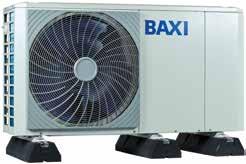
Baxi has a new range of air source heat pumps (ASHPs) as part of a packaged solution that includes cylinders, controls, training, enhanced warranty options, nationwide commissioning and after-sales support.
The Baxi HP40 monobloc ASHP range comes in outputs of 4kW to 13kW.
The heat pumps are designed to be used with a cylinder and come with a magnetic filter as standard. DC inverter technology maximises energy efficiency.
Renewables director Harriet Evans says: “We understand
many heating engineers will need to become familiar with ASHPs for the country to hit that 600,000 heat pump installation target.
“Whether installers are new to heat pumps or already have a recognised qualification, we offer everything they need to become comfortable with Baxi’s ASHPs, from initial training and on-site commissioning support on the first install to expert customer service and after-sales advice.”
The ASHPs come with enhanced warranty options of up to five years.
They are joined by an updated Baxi Assure heat pump range for housebuilders, developers, social housing providers and their appointed contractors to install in new-build and social housing properties. www.baxi.co.uk/ products/air-sourceheat-pumps
easier,” says technical director Sean Keleher. “It is the next step in helping homeowners utilise their heating system more efficiently while using less energy and cutting down energy bills.
“With diagnostics at your fingertips, boiler faults are flagged within the app and an engineer is notified immediately to identify any problems before they become more serious, which in turn will help minimise boiler downtime.
“The technology is also useful for residents in rental properties because they’ll be able to flag issues to their landlord before they develop, speeding up the maintenance process and, again, reducing downtime.”
ON AI also includes geofencing so users can switch the boiler on or off based on their proximity up to a radius of 5km.
www.navien.co.uk/technology/ on-ai

Honeywell Home’s new DT4 room thermostat range has been developed in response to installer feedback to help improve energy efficiency in customers’ homes.
Using the simplicity and reliability of the mechanical room thermostats of the 1970s, the room thermostat combines a modern, sleek design with today’s engineering.
It can be integrated into both new and older-style heating systems, as well as working with smart heat zoning solutions, including underfloor heating and heat pumps.
It’s compatible with existing Honeywell Home wireless products and provides wired or wireless options for time proportional or modulating
appliance control. Wireless and OpenTherm options work with the Honeywell Home Evohome and new HCC100 underfloor multi-zone controller.
It comes with a five-year warranty as standard. www.resideo.com/dt4
Viessmann has added three lower-output variants to its Vitocal 150-A/151-A domestic air source heat pump range. The 4kW, 6kW and 8kW models complement its current 10kW, 13kW and 16kW versions, providing a bigger choice of outputs for a wider range of heating modernisation projects.

All Vitocal 150-A/151-A models provide both heating and cooling and can be connected to single-phase electricity supply, with three-phase models also
available for the 10kW to 16kW models. They use R290 natural propane refrigerant, which is one of the most climate-friendly and cost effective available .
The wall-mounted Vitocal 150-A and the floor-standing Vitocal 151-A with integral 190L DHW cylinder have a maximum flow temperature of 70°C. If the existing cylinder is not suitable, then the Vitocal 151-A with integral cylinder is a suitable replacement.
The One Base control platform includes an integrated energy management system, providing transparency of energy consumption and costs.
Marketing manager Darren McMahon says: “The arrival of the 4kW, 6kW and 8kW models provides our installers with added flexibility to select the appropriately sized product for homes with low heat loss, such as smaller or newer homes, or perhaps whole-house retrofits.” www.viessmann.co.uk
Panasonic’s Aquarea L Generation heat pumps now come in Hydro Split All in One high-performance units. The heat pumps are available in capacities of 5kW, 7kW and 9kW.
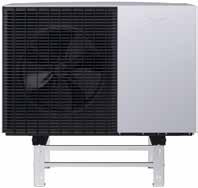
The All in One R290 unit has a hydraulic connection between the indoor and outdoor unit, providing water outlet temperatures of up to 75°C down to -10°C. These units are suitable for retrofit applications, when renovating a home with existing radiators.
It’s a compact, easy-to-install system with a footprint of 598mm x 600mm. It can be neatly lined up with other big appliances like a fridge or washing machine to reduce the space required for installation. Its low height means it can also be installed with a ventilation unit on top.
The unit generates domestic hot water and stores it inside an insulated 185L stainless steel tank.
www.aircon.panasonic.eu
New from Hamworthy Heating is the Dorchester DR-SG water heater. It comes in 10 power outputs and three storage capacities, with a durable stainless-steel tank, heat exchanger and coil.

It’s suitable for renovation and new-build projects, including locations with substantial and continuous hot water demand such as hotels and sports facilities, particularly when replacing a noncondensing water heater.
The water heaters are operated via the Siemens LMS mini controls platform and feature an intuitive digital control panel with a clear backlit LCD and a scroll wheel.

It’s designed to fit through a standard 800mm doorway with a
narrow diameter of 80cm (excluding 538 models), and is lightweight for its class, with straightforward transportation and installation.
It’s approved for multiple flue system types and all models are convertible to run on LPG. www.hamworthy-heating.com
Vaillant has unveiled the next generation of its Ecotec Plus boiler and a new MyVaillant Connect gateway.
The company has remastered the Ecotec Plus combi and system range, adding refinements while keeping its familiar features and layout. The new models work with natural gas today, as well as being hydrogen-prepared for the future, and most models are LPG-convertible without the need for a conversion kit.
The Ecotec Plus model has all components easily accessible from the front of the boiler for simpler routine maintenance and servicing. Maintaining the same footprint, connections, pipe layouts and accessories as previous models means that you’ll see many similarities between installing the existing and new models. The design retains the iconic Vaillant curve.
IoniDetect unlocks the most efficient combustion and optimised performance by constantly monitoring the quality of the gas, so maximising the
available energy. The system collects performance data on key components, so that you can remotely access and diagnose any issues.
With its new Limp Home function, the Ecotec Plus will try and correct a fault itself 10 times.
If it can’t do so, it will run at a reduced output and alert the homeowner and the installer.
MyVaillant Connect is a new gateway to provide a connected heating system solution. It integrates with smart home platforms, including Apple HomeKit, Amazon Alexa and coming soon, Google Home. www.vaillant.co.uk/remastered

Are you interested in joining global family business
Viessmann with a turnover of more than 4 billion Euros?



Viessmann ensures optimum climate control through intelligent and sustainable energy solutions - for residential, industrial, and commercial buildings. As a fourth-generation family business, we think long-term. More than 14,500 member s of the Viessmann family in 74 countries are passionate about playing an active role in the energy transition. We believe in people and their potential. If you are up for the challenge and want to be part of the energy transition, apply now!
What makes us special
Our employees are the key to making our vision come alive. With that in mind, we’ve created a range of perks for our employees, or as we like to call them, Viessmann family members:
Competitive Salary
Annual bonus
Pension scheme
Death in service benefit and private healthcare options

Wellbeing & EAP programmes



25 days annual holiday (Excluding bank holidays)








Ongoing training and support
Roles available


Technical Trainer, Area Business Manager (Residential & Commercial), Regional Business Manager, Field Service Engineer






Contact recruitment-uk@viessmann.com

BTAAC offer a full range of Domestic and Commercial Gas training and assessments in a well-equipped training facility at very competitive prices.



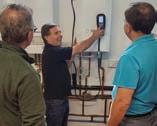
· All ACS Domestic Gas – core + appliances



·All ACS Commercial Gas including CMDDA1 and BMP1

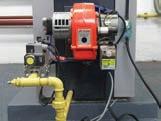
· Unvented Hot Water & Water Regs


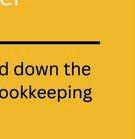

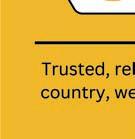

· Highly knowledgeable trainers with years of experience




· Very friendly training environment
For more information and to book your course contact us on:- Email: sarah.bygraves@bromleytraining.co.uk Telephone: 0208 315 5678
Bromley Training & Assessment Centre (BTAAC) Unit 4 Ashgrove Industrial Estate Ashgrove Road, Bromley Kent, BR1 4JW







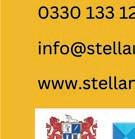


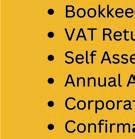
























Registered Gas Engineer has teamed up with Carhartt to offer one lucky reader the chance to get kitted out for the colder months – plus five runners-up will receive a cool Carhartt beanie.

Carhartt is the authentic workwear brand founded in 1889 in Detroit, Michigan, USA, by Hamilton Carhartt, affectionately known as Ham. For more than 130 years, the company has been known for its rugged construction, innovative designs, exceptional quality standards, durability and comfort.
With a heritage built on tough workwear specifically designed for hard-working professionals, the workwear looks great and is well suited to the exacting standards that tradespeople need here in the often rainy and cold UK.

To this day, Carhartt prides itself on helping and protecting hard-working men and women. n www.carhartt.com
• Ripstop cargo work trousers
• Classic relaxed fit K87 pocket T-shirt
• Hoodie
• Super Dux Active jacket
• Mesh-back logo graphic cap.
For your chance to win this great Carhartt clothing bundle, please answer the following question correctly:
Carhartt’s founder Hamilton was better known by what name?
a) Geoff
b) Ham
c) Kev.
Send your answer, plus your name, address and registration number to: competition@ registeredgasengineer.co.uk
Please include Carhartt
Competition in the subject line. One winner and five runners-up will be chosen at random from all correct entries received by the closing date of Thursday 31 August 2023.
By entering this prize draw, you agree to these terms and conditions:
• Registered Gas Engineer and Carhartt do not accept responsibility for lost, delayed, corrupted or invalid entries.

• One winner and five runners-up will be chosen at random from all correct answers submitted in accordance with these terms and conditions.
• The winners will be notified by email. The judges’ decision is final and no correspondence will be entered into.
• The prize cannot be substituted or upgraded.
• The prize is non-transferable and there is no cash alternative.
• Registered Gas Engineer and Carhartt may disqualify you from winning if they have reasonable grounds to suspect that you are in breach of these terms and conditions or your participation is fraudulent or otherwise unlawful.
• This draw is not open to employees of Carhartt, Gas Safe Register or Registered Gas Engineer or their direct family members or agents.
• Registered Gas Engineer and Carhartt do not accept any responsibility for any network connection,
technical failure or other problem in any telephone line, network, system, provider or otherwise which results in any entry not being properly recorded or received.
• One entry per person.
• Your entry details will be provided to Carhartt, which may use them for marketing purposes. By entering this competition, you agree that you may receive communications from Carhartt. If you do not wish to be contacted, please add NO COMMUNICATIONS in your email entry.
